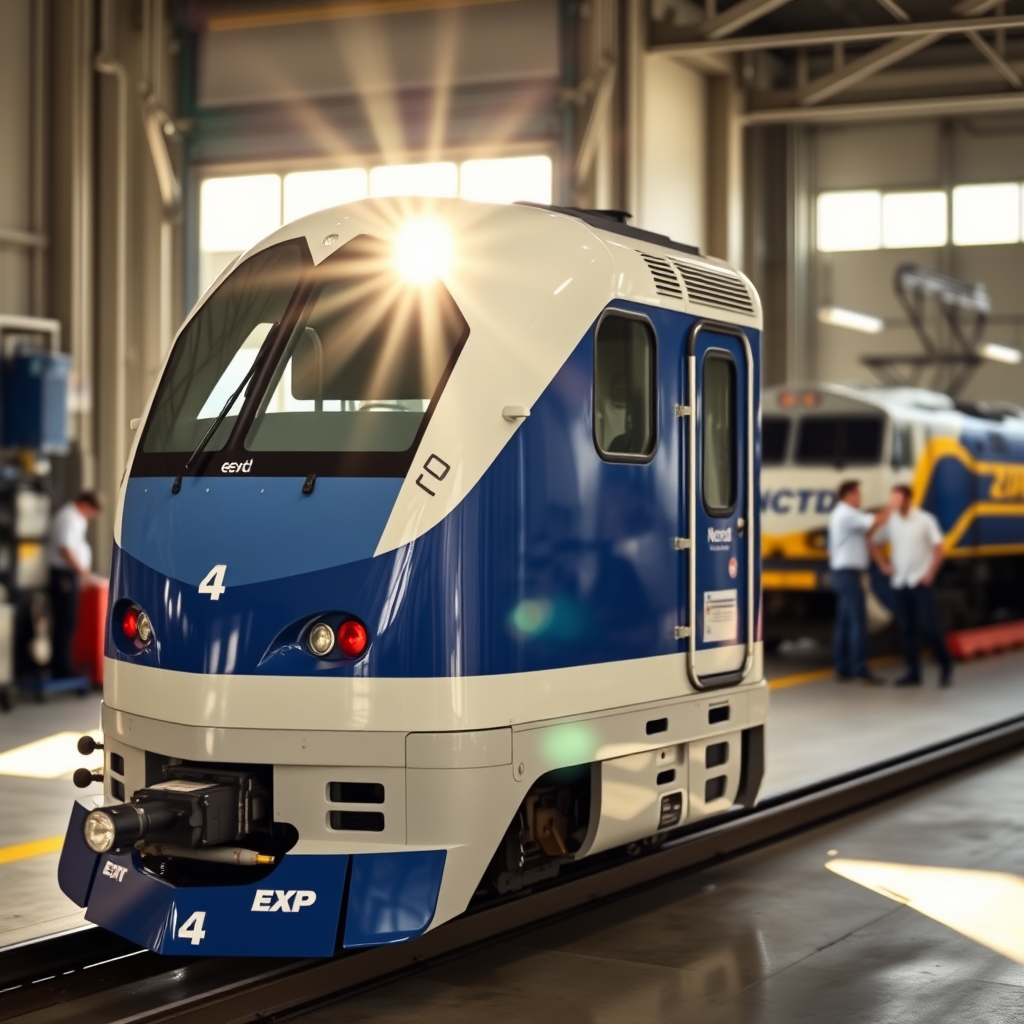Northumberland Line: Rail Infrastructure Success Drives 500K Journeys
Northumberland Line surpasses 500,000 passenger journeys in 8 months, demonstrating strong public demand for revitalized rail service connecting Newcastle and Manors.

Northumberland Line Surpasses 500,000 Passenger Journeys in First Eight Months
Northern, the train operating company, has announced a significant milestone for the Northumberland Line, a revitalized passenger rail route in North East England. Since reopening to passenger services on December 15, 2024, the line has facilitated over 500,000 journeys in just eight months. This impressive figure highlights the strong public demand for the service, which connects Newcastle and Manors to newly-built stations. The Northumberland Line, a project spearheaded by the Department for Transport (DfT), Network Rail, Northumberland County Council, and Northern, represents a crucial investment in regional transport infrastructure. This article will explore the key factors contributing to this success: the infrastructure improvements, the operational strategies employed, and the future plans for the line’s expansion, and their overall implications for regional transportation.
Revitalizing the Tracks: Infrastructure Upgrades and Safety Enhancements
The resurrection of the Northumberland Line was a complex undertaking, requiring substantial infrastructure upgrades to modernize the 16-mile route. Since its initial use as a freight-only line that began in the 1960s, this project has involved comprehensive track renewal. More than 16 miles of track have been meticulously replaced, ensuring the long-term reliability and safety of passenger services. Furthermore, the project included the implementation of a modern signaling system. This upgrade is crucial for optimizing train movements and enhancing overall operational efficiency. In addition, a significant focus was placed on safety, with 24 level crossings receiving upgrades to meet current industry standards. These improvements are not only critical for the safety of passengers but also contribute to a smoother and more efficient railway operation.
Operational Strategies: Service Frequency, Capacity Expansion and Affordable Fares
Northern’s approach to the Northumberland Line has been shaped by the goal of attracting passengers and ensuring a seamless travel experience. Recognizing the growing demand, particularly during weekends and school holidays, the operator has implemented strategies to maximize ridership. A key decision was the introduction of increased capacity. Starting in July, all Sunday services were extended to run with four-carriage trains. These enhancements provide the necessary capacity to accommodate the increasing passenger numbers, improving passenger comfort. The company has also prioritized affordability. Peak single fares between Newcastle and Ashington are capped at £3, with off-peak tickets priced at £2.60 for a single and £5.20 for a return. Passengers can easily purchase tickets via the Northern website or mobile app, and Pop Pay As You Go (PAYG) cards are encouraged, allowing seamless transfers with the Tyne and Wear Metro network, fostering integrated travel.
Route Expansion and Future Development
The Northumberland Line project extends beyond its initial operational phase. While the first wave of stations is already serving passengers, the development of new stations continues. The construction of Blyth Bebside station is nearing completion, and further stations at Northumberland Park and Bedlington are slated to open in 2026. These expansion projects signify a strong commitment to enhancing connectivity and catering to the evolving needs of the local communities. This continued investment suggests the ambition of building a more comprehensive and integrated rail network within the region. These projects should bring more passengers and make the route more accessible to wider areas.
Positive Industry Impact and Economic Benefits
The successful launch of the Northumberland Line serves as a powerful example of how strategic investments in rail infrastructure can be instrumental in revitalizing regional transport networks. The early achievements of the Northumberland Line suggest great things to come. Reaching the milestone of 500,000 passenger journeys within a short timeframe clearly demonstrates the demand for accessible and efficient public transportation in the region. The project has also generated positive economic impacts, stimulating local business activity and potentially reducing reliance on private vehicles. Furthermore, the collaborative approach adopted by the DfT, Network Rail, Northumberland County Council, and Northern offers a model for other regions looking to revitalize or expand their rail networks. This project has not only enhanced connectivity but also contributed to improved local economies and provided convenient public transportation.
Conclusion
The Northumberland Line’s rapid success, marked by over half a million passenger journeys in less than a year, has firmly established it as a vital part of the North East’s transport infrastructure. This positive result reflects the effectiveness of infrastructure investment, the importance of a well-defined operation, and the commitment of stakeholders. The expansion plans, with new stations in development, indicate an ongoing dedication to enhancing accessibility and expanding service offerings. The line is a symbol of the potential for positive transformation through strategic investment and collaboration, in addition to the reduction of reliance on private vehicles. As the railway expands and further integrates into the regional transport network, its positive impacts on the local community and the wider rail industry are expected to increase.






